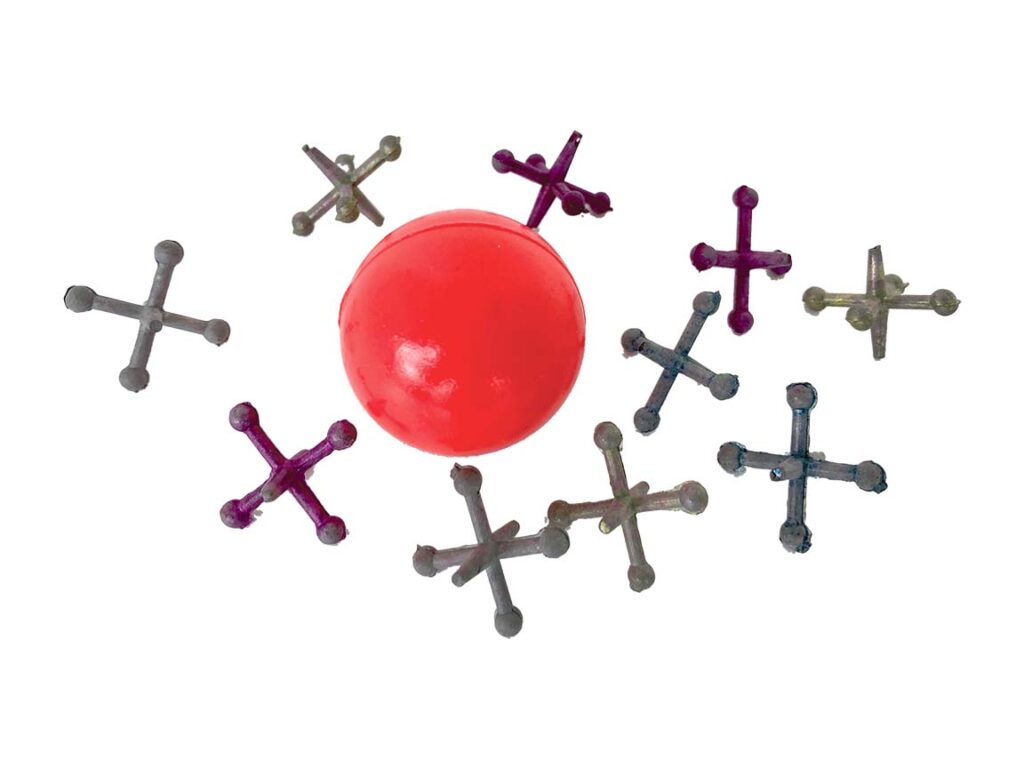
Dorri Partain
Contributor
The Industrial Revolution changed how children played by manufacturing game pieces to replace the small bones, stones and shells that had been used for play since ancient times.
The classic or “old-fashioned” game of jacks was originally played using the knucklebones of sheep as their odd, somewhat pointed shape made them easy to scoop up quickly.
Ancient Egyptian murals depict scenes where games are played with bones that appear similar to the modern day version of ball and jacks. A round stone was thrown into the air while the player would scoop up the knucklebones before the stone landed.
The earliest versions of manufactured jacks were founded of lead, with a ball shape and protruding bumps. Eventually, perhaps to conserve the amount of metal used, the jacks took on more of a six-pointed star shape, which also scattered better when tossed into the air.
Packaged with a small rubber ball, the rules adapted to scooping up the jacks before the ball bounced. Whether played alone or with two or more players, multiple versions of the game can be played.
For Onesies, once the ball is tossed, the player needs to pick up one jack before the ball bounces. For Twosies, the player needs to pick up two, and so on. The player that is most successful is deemed the winner of that round.
For boys, the ball and jacks were often packaged in a drawstring pouch to contain all the pieces. For girls, they might be offered in a plastic pouch that usually resembled a purse.
As with many common toys, each manufacturer developed their own mold for the jacks, which could be plain metal or painted. The ball could be plain red rubber, brightly colored, or swirled colors. Later, jacks were molded from bright-colored plastics.
Like many multiple piece games, eventually the ball would get used for something else and lost, and the jacks too. With as few as two though, players could still play a rousing game of Battle Jacks by spinning the jacks on their pointed ends toward each other to collide or see which would spin the longest.
















